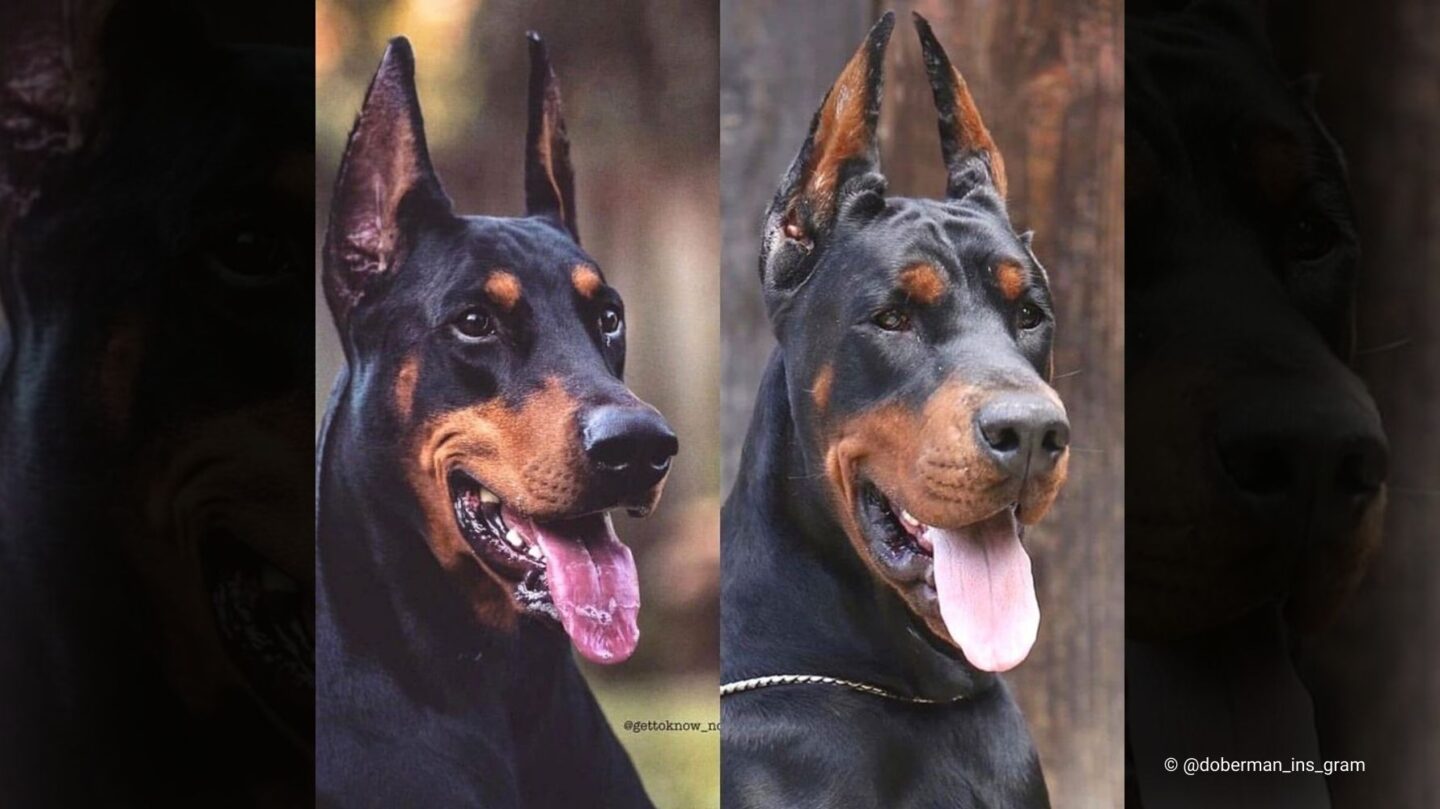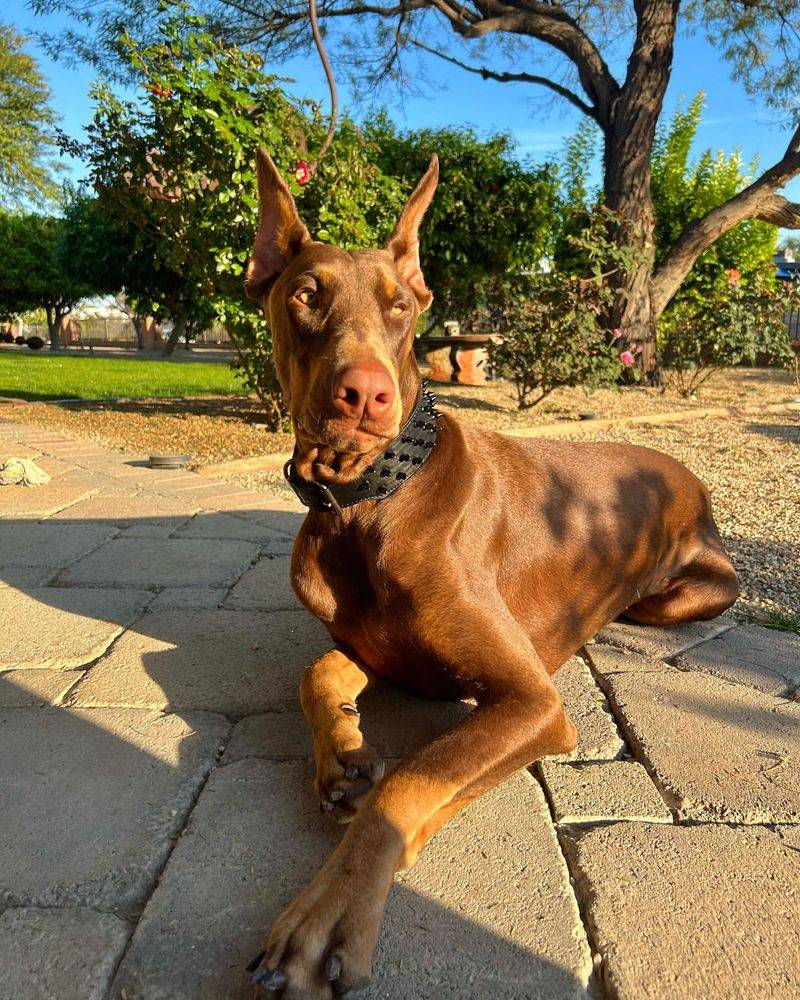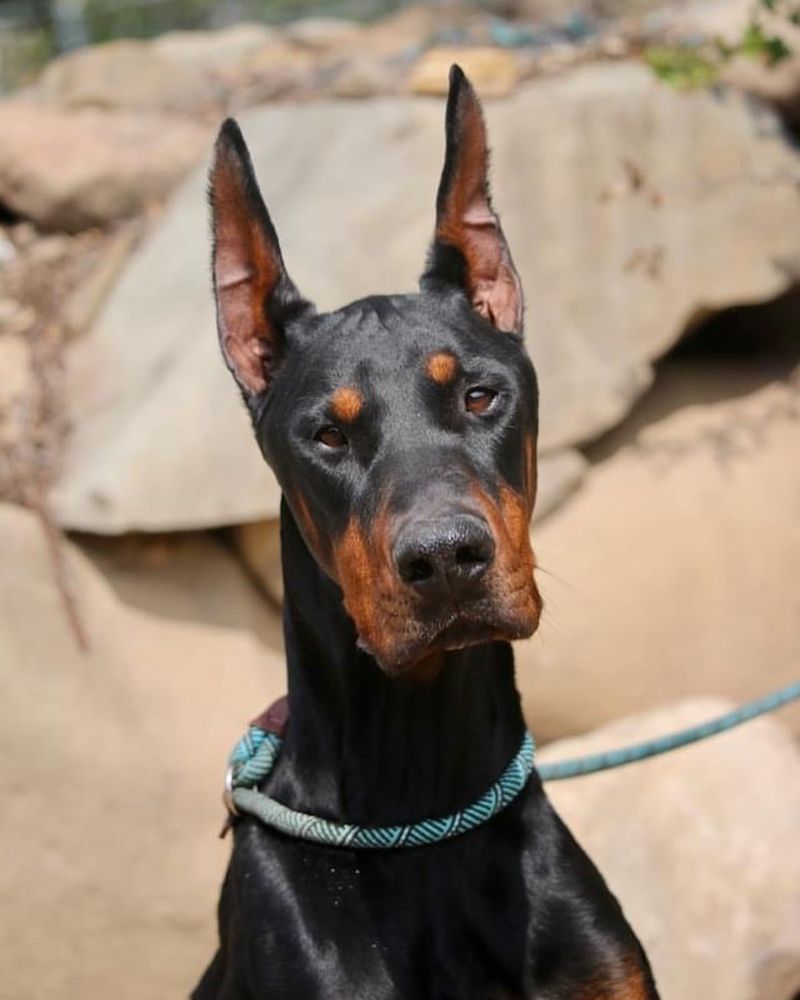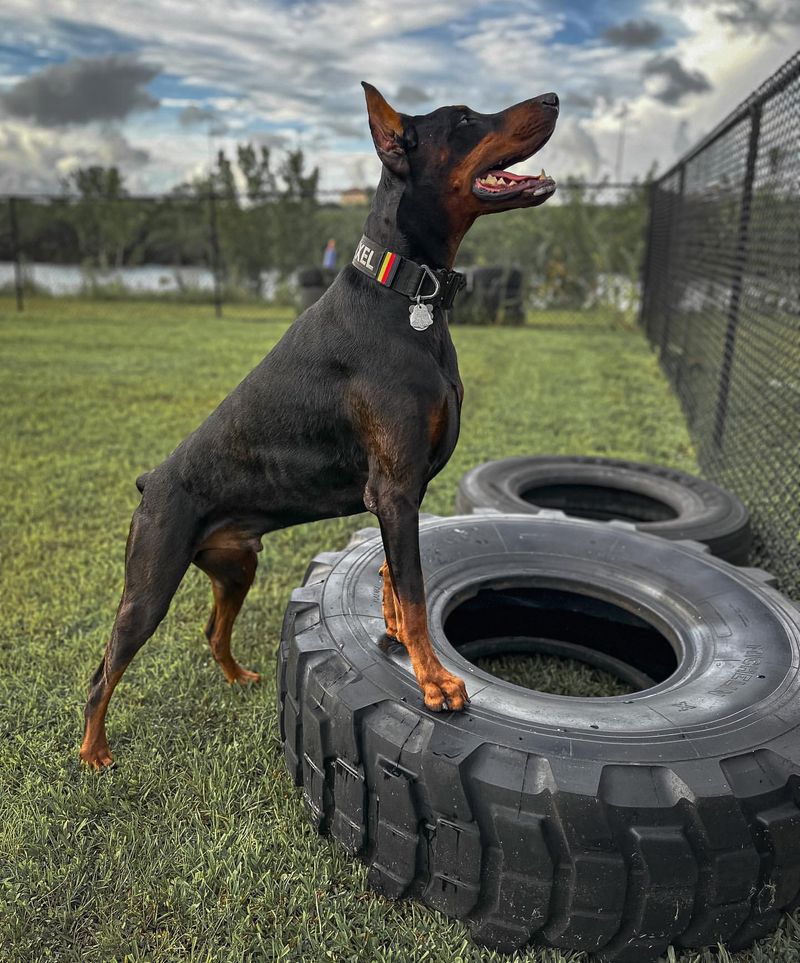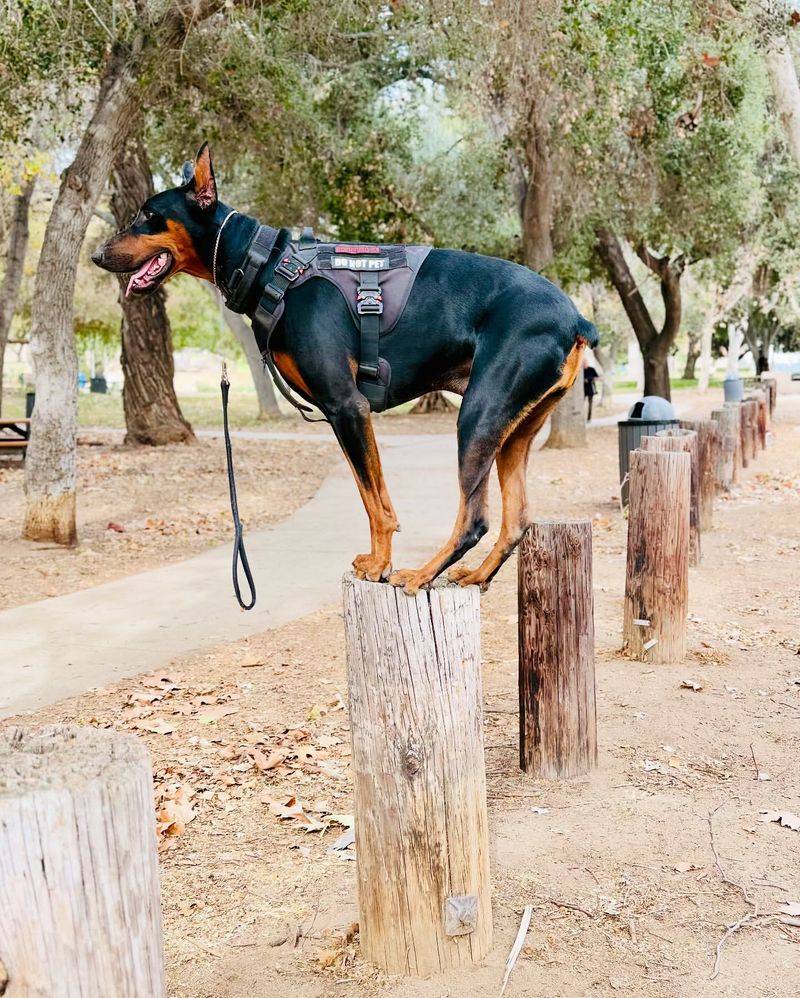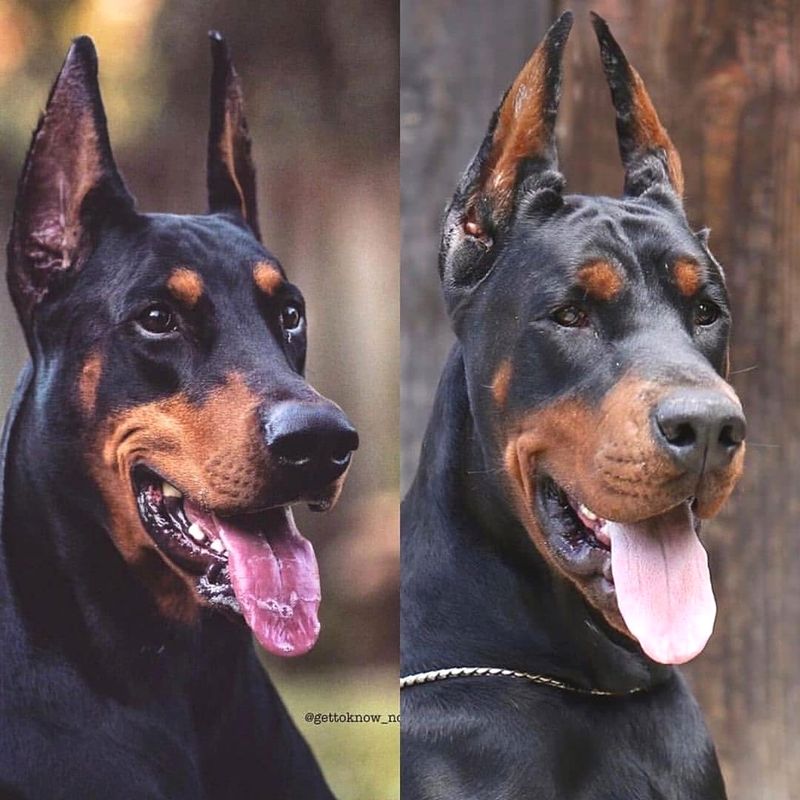Doberman Pinschers are renowned for their loyalty, intelligence, and sleek appearance, but did you know that there are notable differences between the American and European varieties? Understanding these distinctions can help potential owners make an informed decision and appreciate the unique qualities of each type. In this blog post, we’ll explore eight key differences that set these two Doberman breeds apart, from physical characteristics to personality traits. Whether you’re a dog enthusiast or considering welcoming a Doberman into your family, this guide will provide valuable insights and spark a greater appreciation for these remarkable dogs.
Physical Build
The American Doberman Pinscher is often described as more elegant and sleek, with a lighter build compared to its European counterpart. In contrast, the European Doberman boasts a more robust and muscular physique, emphasizing strength. These physical traits are not just cosmetic; they reflect the different breeding standards and functions for which each type was developed. While the American variety is often bred for show and as companions, the European Doberman is traditionally used in working roles, requiring a sturdier structure. These physical differences are immediately noticeable to the keen observer.
Temperament
American Dobermans are typically bred for a more sociable and playful temperament, making them excellent family pets. They tend to be friendlier and more approachable. On the other hand, European Dobermans often possess a more reserved and serious demeanor, owing to their working dog heritage. They are bred for protection and may exhibit stronger guarding instincts. This contrast in temperament means that prospective owners should consider their lifestyle and the dog’s intended role. Socialization and training can further shape these inherent traits, offering versatility in either type.
Size Differences
Size is another notable difference between American and European Dobermans. Generally, European Dobermans are larger, with males averaging 28 to 30 inches in height and females slightly smaller. In contrast, American Dobermans tend to be slightly shorter, with a more refined frame. These size variations also reflect the different purposes each breed serves; European Dobermans often excel in physical tasks and protection roles, while American Dobermans are well-suited for companionship and show. Understanding these size differences is crucial for owners concerned with space and activity level needs.
Coat and Color
While both American and European Dobermans share similar coat colors, including black, red, blue, and fawn, there are subtle differences in texture and sheen. European Dobermans often have a thicker and denser coat, suitable for harsher climates they might encounter in working roles. The American Doberman’s coat is typically smoother and may appear glossier, aligning with its role as a show dog. These differences can be important for owners considering grooming needs and environmental suitability. Regardless of type, regular grooming helps maintain their striking appearance and promotes healthy skin.
Head Shape
The head shape of Dobermans can vary noticeably between the American and European types. American Dobermans tend to have a more elongated head with a longer muzzle, lending an elegant look. In contrast, European Dobermans possess a more compact head and broader skull, emphasizing strength and functionality. These differences in head shape are closely tied to the breeds’ historical roles and breeding standards. For potential owners or enthusiasts, these features can be a determining factor in selecting a Doberman that fits their aesthetic preference or functional needs.
Drive and Energy Levels
European Dobermans are renowned for their high drive and energy levels, making them suitable for work-intensive roles such as police or military dogs. They thrive on mental and physical challenges, requiring dedicated training and stimulation. Conversely, American Dobermans are often calmer and more adaptable to a leisurely lifestyle, though they still enjoy physical activity and mental engagement. This variation in energy and drive should be considered by prospective owners looking to match a dog’s activity level with their own lifestyle. Both types require commitment to exercise and training, but in varying intensities.
Training Focus
Training is crucial for both American and European Dobermans, but their natural inclinations differ. European Dobermans are generally more focused and driven, excelling in advanced training and tasks due to their working dog lineage. They require consistent and challenging training routines. On the other hand, American Dobermans, while intelligent and trainable, may not exhibit the same level of intensity and focus, making them more suited for obedience and companionship training. Understanding these differences can help tailor training approaches to suit each type’s strengths and needs, ensuring a well-behaved and happy dog.
Health and Longevity
Health and longevity can vary between American and European Dobermans due to different breeding focuses. European Dobermans are often bred with an emphasis on working ability and robustness, potentially leading to a stronger constitution. However, both types can be prone to genetic issues like cardiomyopathy and hip dysplasia. American Dobermans may have a slightly longer lifespan, reflecting a focus on companion roles. Prospective owners should research breeder practices and seek health screenings to ensure a healthy pet. With proper care, both varieties can lead fulfilling lives, enriching their owners’ experiences.
